In the American used car market, one of the most nerve-racking experiences is seeing the check engine light (CEL) suddenly illuminate especially if you’re relying on a high-mileage vehicle.
For those looking to buy or keep a car that’s already passed the 100,000-mile mark, reliability is king.
While some vehicles quietly soldier on without a hint of trouble, others flash constant diagnostic errors, draining wallets and testing patience.
These are the ones that might look tempting on the used market but end up draining your wallet with constant repairs, sensor failures, electrical gremlins, and of course, the never-ending CEL saga.
Whether it’s poor engineering, over-complicated tech, or a history of neglected recalls, these models can quickly turn from bargain buys to money pits.
In this article, we’re taking a hard look at five of the most reliable used cars that can hit and cruise well past 100,000 miles without triggering the CEL, as well as five notorious models that just can’t seem to keep that warning light off.
Reliable Cars With 6-Figure Mileage and No CEL
Whether you’re hunting for your next dependable daily or trying to dodge a maintenance nightmare, this list will help you separate the genuine long-haulers from the high-mileage headaches. Here’s a detailed breakdown for U.S. buyers: five cars known to hit six-figure mileage without CEL issues, and five that are infamous for throwing codes at every turn.
1. Toyota Camry (2010–2017)
The Toyota Camry has long been a poster child for durability, and models from the early 2010s routinely reach 200,000 miles without major powertrain problems.
Owners report going tens of thousands of miles without triggering the CEL thanks to Toyota’s conservative engineering, rock-solid 2.5L four-cylinder engine, and bulletproof electronics.
Why it stays clean: Simple, overbuilt engines and top-tier component quality.
The 2012 Toyota Camry represents a comprehensive update, addressing many of the shortcomings of its predecessor—a model that left much to be desired.
At first glance, the latest version may appear similar, but under the surface, it’s been thoroughly reengineered and refined to meet the contemporary standards of usability, safety, and interior craftsmanship set by its competition.
It’s also been reworked and restyled for a bit more visual and dynamic appeal. That said, the Camry continues to stand firmly on its core strengths—durability and reliability—which remain its defining traits in the segment.
One of the more noticeable improvements lies in the powertrain lineup, which carries over the engines from the previous generation but with enhancements. The 2012 Camry features an updated 2.5-liter four-cylinder engine producing 178 horsepower and a 3.5-liter V6 generating 268 hp.
Both are now paired with a six-speed automatic transmission, resulting in improved fuel economy. The four-cylinder achieves an EPA-estimated 35 mpg on the highway, while the V6 manages 30 mpg.
Despite this improved efficiency, both engines remain responsive and capable of delivering brisk acceleration when called upon. For those seeking even greater fuel savings, the Camry Hybrid is also available and reviewed separately.
Inside the cabin, Toyota has made notable changes to seating and space. The front seats have been reshaped for better support and adjusted to increase rear legroom. More significantly, the overall interior design and material quality have seen a major overhaul.
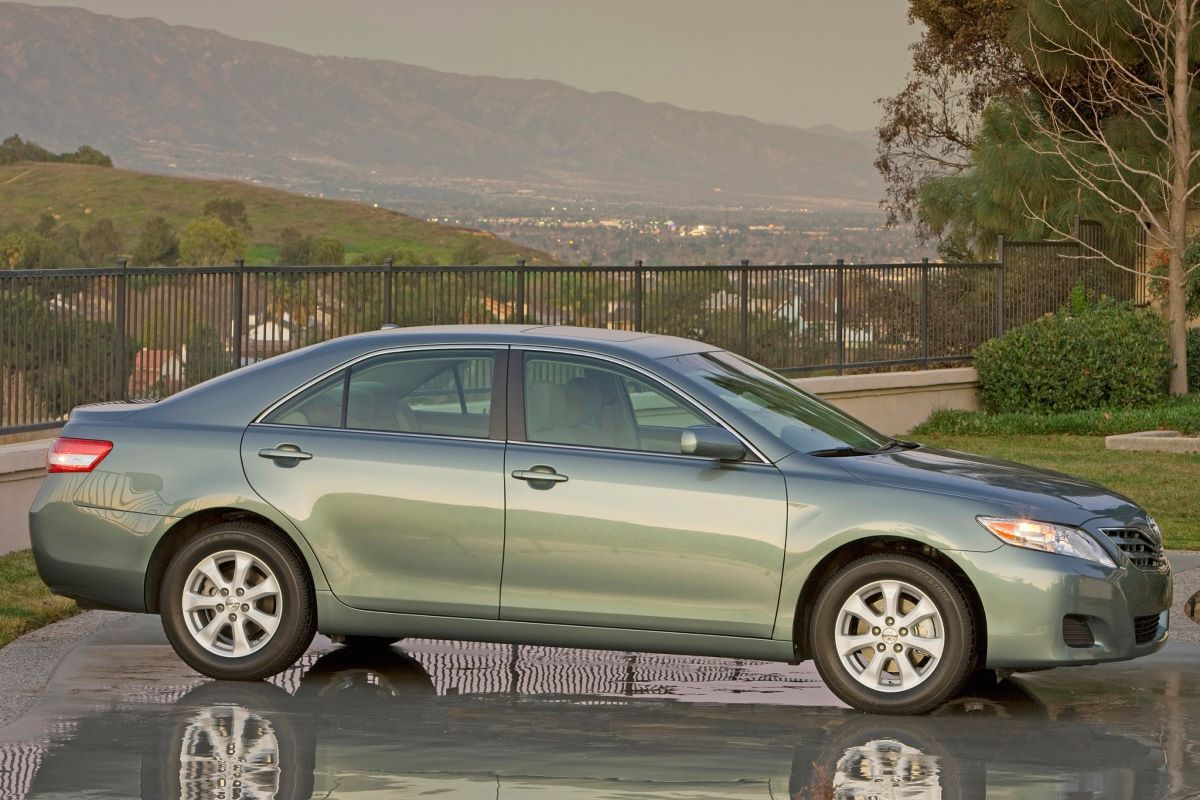
The previous model suffered from uninspired styling and subpar materials, but the 2012 model corrects course, especially in the SE and XLE trims. These versions showcase much higher build quality and a well-chosen mix of trims, textures, and materials that elevate the cabin ambiance.
A new, user-friendly touchscreen interface and a host of advanced tech features further distinguish the Camry from others in its class.
Toyota also aimed to silence critics who long derided the Camry’s lack of driver engagement. The suspension has been revised to enhance handling and provide a more composed ride.
While this effort has yielded some improvement, the Camry still falls short in terms of steering feel and driver connection, leaving it behind most of its competitors in terms of dynamic performance.
The SE trim stands out as an exception—not because it transforms the Camry into a true sport sedan, but because it finally elevates the driving experience to a class-competitive level.
All things considered, the 2012 Toyota Camry reasserts itself as a top contender among midsize family sedans. However, the bar has been raised across the board, and we recommend that buyers also take a close look at the competition.
The Honda Accord and Mazda 6 continue to impress with their sharp driving dynamics, while the Hyundai Sonata matches the Camry in refinement and offers superior styling and value.
Then there’s the redesigned Volkswagen Passat, which now boasts a roomier cabin and a lower price tag, all while retaining its European appeal. So while the Camry has addressed many of its predecessor’s flaws, its reinvigorated rivals ensure that choosing it is no longer the automatic decision it once was.
All 2012 Toyota Camry models are equipped with front-wheel drive and a six-speed automatic transmission. Two engine choices are available. The base engine is a 2.5-liter four-cylinder producing 178 horsepower and 170 pound-feet of torque.
This engine accelerated the Camry from zero to 60 mph in 8.1 seconds, placing it among the quickest four-cylinder sedans in its class. The EPA rates its fuel economy at 25 mpg city, 35 mpg highway, and 28 mpg combined, making it a leader in efficiency among midsize sedans.
For those seeking more power, a 3.5-liter V6 is optional, delivering 268 horsepower and 248 lb-ft of torque. It accelerates from zero to 60 mph in 6.6 seconds, which is about average for optional V6 engines in this category. Despite its performance, fuel economy remains solid at 21 mpg city, 30 mpg highway, and 25 mpg combined.
2. Honda Accord (2013–2017)
The ninth-generation Accord especially the 2.4L i-VTEC four-cylinder models can easily rack up mileage into the high 100,000s without setting off the CEL.
This generation eliminated many of the transmission complaints seen in earlier years and focused on long-term drivability. Why it stays clean: Refined engine management systems and fewer known sensor failures.
Following the comprehensive redesign it received last year, which brought a sleeker profile, improved fuel efficiency, and a more upscale cabin to the Honda Accord, one might have expected Honda to simply stay the course.
After all, this is a model that moves roughly 1,000 units a day. However, there was still a noticeable gap in the lineup: the absence of a hybrid variant.
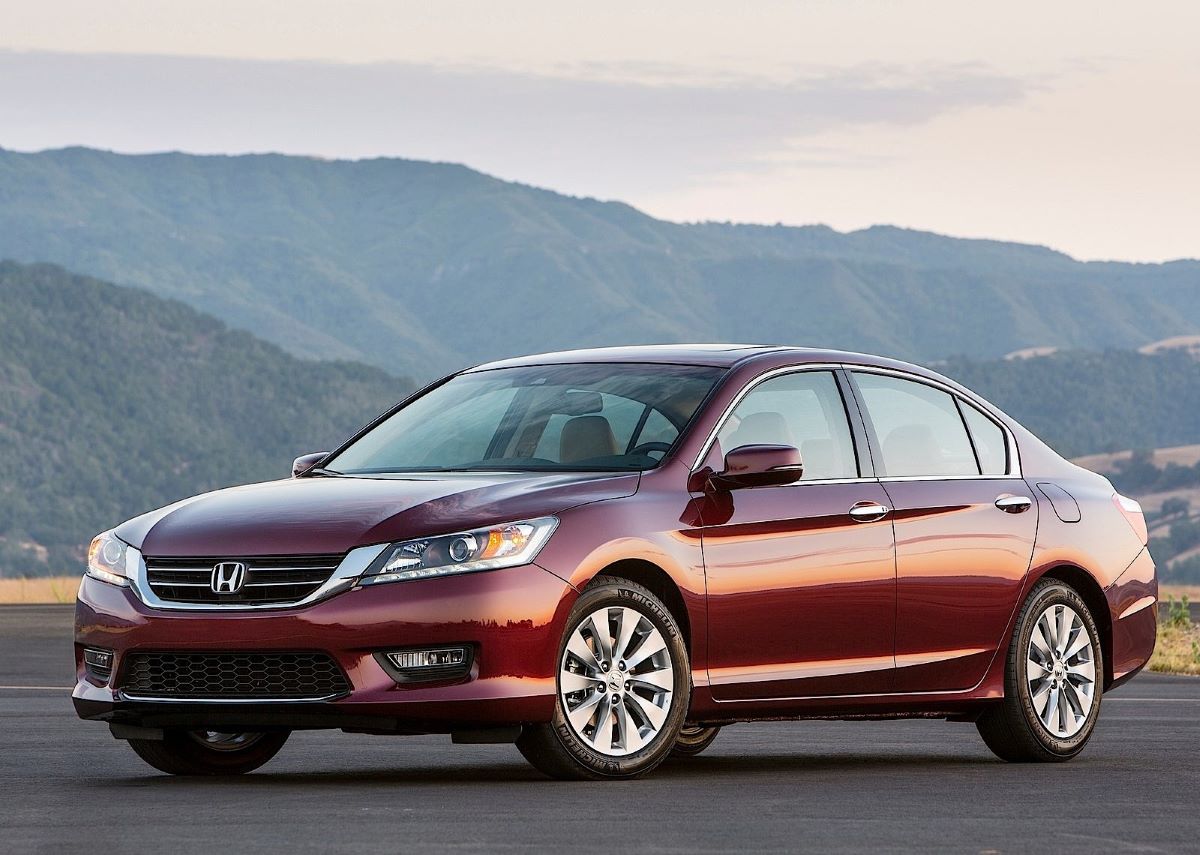
For 2014, that gap is filled—not just with one, but two hybrid options. One of these is a plug-in hybrid (discussed in a separate review), while the other is a conventional hybrid model, projected to earn an EPA combined fuel economy rating of 47 mpg upon its release later in the 2014 model year.
Historically, Accords have been regarded as well-rounded vehicles, a characteristic that—paired with a longstanding reputation for reliability—has played a significant role in their enduring popularity. The latest Accord continues to uphold that legacy.
Even the most popular versions, equipped with the four-cylinder engine and an automatic transmission (a continuously variable transmission, or CVT, to be exact), manage to strike an exceptional balance between performance and efficiency.
Consider its brisk 0-to-60 mph sprint of 7.8 seconds, coupled with an EPA-estimated 30 mpg combined fuel economy. These figures would be commendable for a compact sedan, but they’re especially notable for a midsize car offering this level of comfort and interior space.
Comfort and value are also essential elements of the Accord’s appeal. The interior is spacious, the seats are supportive, and the ride remains pleasantly quiet, even at highway speeds. Rear-seat accommodations, in particular, are standout features.
Furthermore, even the entry-level LX trim is generously equipped, featuring dual-zone automatic climate control, iPod/USB connectivity, and a rearview camera, all standard. These are features that often come as optional extras on vehicles priced considerably higher.
With its compelling mix of strong performance, excellent fuel economy, refined driving dynamics, spacious interior, and a reputation for reliability, the 2014 Honda Accord firmly remains one of the top choices in the fiercely competitive midsize sedan category.
Still, it isn’t without solid rivals. The 2014 Nissan Altima is another standout, offering sharper handling, even greater efficiency from its base four-cylinder engine, and a well-crafted interior.
The Mazda 6 continues to hold the crown for being the sportiest in the segment, while the Toyota Camry and Volkswagen Passat offer similar interior space with a focus on ride comfort. Also worth considering are the stylish Ford Fusion and the budget-conscious, feature-rich Kia Optima.
Choosing from this talented group won’t be easy—but if you’re after a sedan that excels across nearly every metric, the Honda Accord deserves a spot at the top of your list.
Also Read: 5 Sedans With the Best Key Fob Range and 5 That Fail At Distance
3. Lexus ES 350 (2007–2012)
Luxury and reliability usually don’t go hand in hand, but the Lexus ES 350 is the exception. Built on a Camry-based platform, this car delivers the same long-term resilience in a more upscale package.
High-mileage ES models often pass emissions and inspections with no codes or hidden issues.
Why it stays clean: Toyota’s legendary 3.5L V6 combined with meticulous Lexus tuning.
Targeting buyers who prioritize a smooth, quiet ride and premium comfort over razor-sharp performance and athletic handling, the Lexus ES midsize luxury sedan has carved out a strong following.
Its success is no accident—Lexus has consistently delivered exactly what this audience desires, all wrapped in a package defined by the brand’s hallmark of refinement.
For 2007, the Lexus ES enters a new generation and adopts the name ES 350. Staying true to its heritage, this latest version continues to share its underlying mechanical foundation with the Toyota Camry.
Like its sibling, which has also been redesigned for 2007, the front-wheel-drive ES 350 now houses a larger, more potent 3.5-liter V6 engine, which is mated to a new six-speed automatic transmission. This setup endows the vehicle with a noticeable increase in power while still retaining commendable fuel efficiency.
Lexus engineers and designers have clearly gone to great lengths to ensure the ES 350 is viewed as a legitimate entry-level luxury sedan.
The redesigned exterior features crisp character lines and narrow taillights that visually link it to the rest of the Lexus family. Moreover, a wealth of upscale features has been added to reinforce its premium image.
Highlights include a keyless entry and ignition system, adaptive headlights that pivot during turns, adaptive cruise control, and a backup camera integrated into the display screen of the optional navigation system. Also available is an enhanced Mark Levinson surround-sound system, which now supports both DVD-audio and video playback.
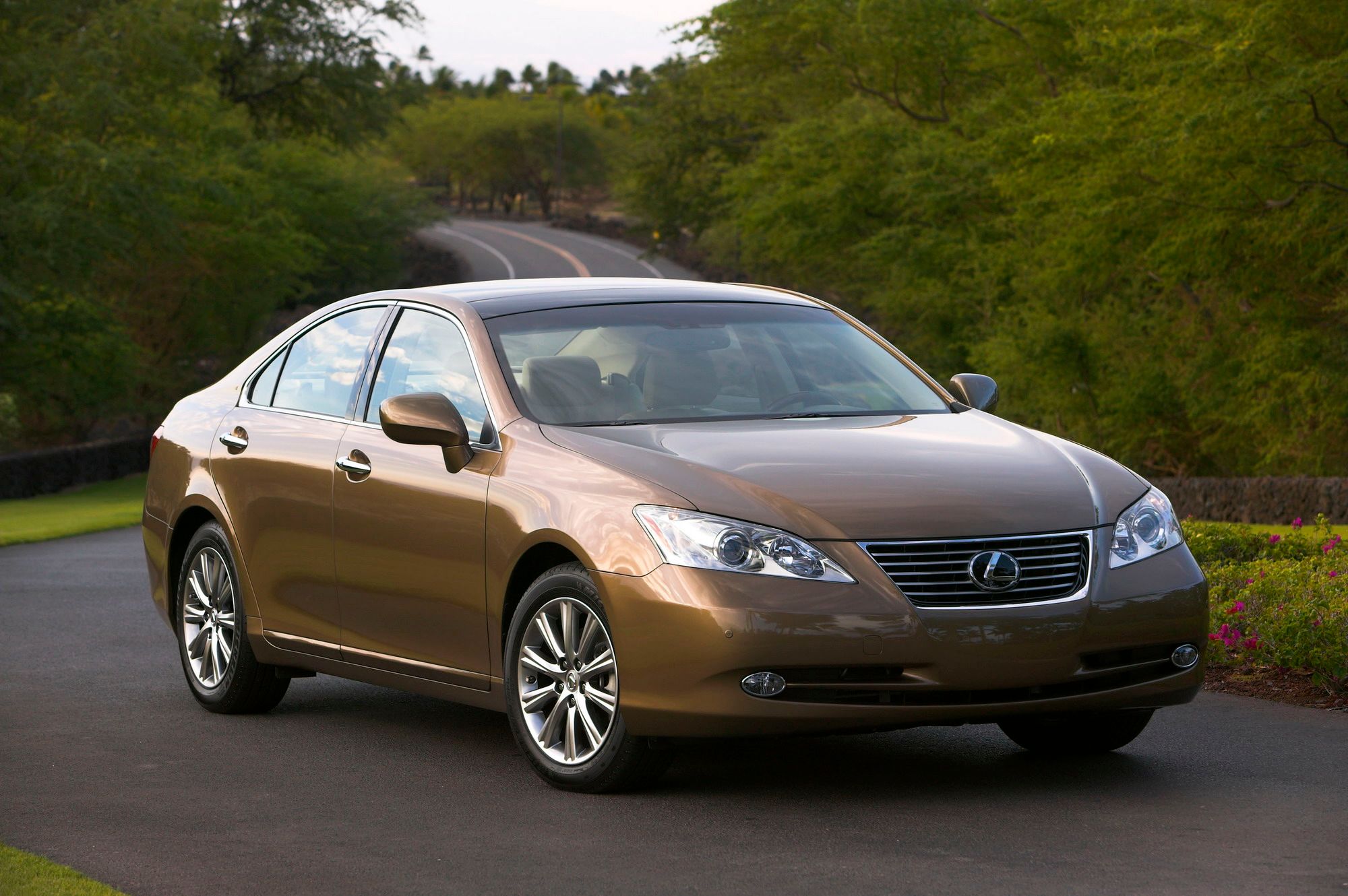
Inside, the 2007 Lexus ES 350 boasts an interior that rivals far more expensive luxury sedans—so much so that it doesn’t concede much ground even to the flagship LS 460.
Every surface and control feels meticulously crafted, from the elegant walnut wood trim to the satisfying precision of the radio’s tuning knob. The attention to detail is unmistakable.
While the robust V6 delivers energetic acceleration, the ES 350 is not engineered for aggressive corner carving. The handling remains composed and reassuring, but driving enthusiasts will find better engagement in sportier alternatives like Lexus’ own IS lineup or direct competitors such as the Acura TL and Infiniti G35.
Those needing more room and V8 muscle might gravitate toward the Chrysler 300C, which packs a 340-horsepower engine and offers greater interior space though its cabin can’t match the ES 350’s refinement or styling.
All things considered, there are several appealing choices in this class, but for those in search of a serene, luxurious, and highly polished sedan that excels at daily commuting, errands, and road trips, the 2007 Lexus ES 350 stands out as a top-tier option.
4. Mazda3 (2014–2018)
Mazda has carved a niche with fun-to-drive compacts that don’t skimp on reliability. The Skyactiv-G engines in these Mazda3s are built with longevity in mind, and many owners praise them for running trouble-free past 120,000 miles.
Why it stays clean: Robust ignition coils and emissions systems that don’t degrade quickly.
The 2014 Mazda 3 ushers in the third generation of this well-loved compact car. With the redesign, Mazda aimed to retain all the qualities that have made the 3 a consistent favorite, such as its practical nature, the availability of both sedan and hatchback body styles, and its signature fun-to-drive personality—while taking a step forward in terms of overall refinement.
Mazda seems to have delivered on that objective. This latest Mazda 3 is built on the same lightweight chassis platform used for the CX-5 crossover and the midsize Mazda 6 sedan. It also features a wheelbase that is 2.4 inches longer than that of the outgoing model, along with a slightly wider and lower stance.
Most notably, Mazda has revamped the front-end styling by adopting its new, more assertive grille design, effectively retiring the car’s former “smiling Nemo face.” And truth be told, that’s a change few will lament.
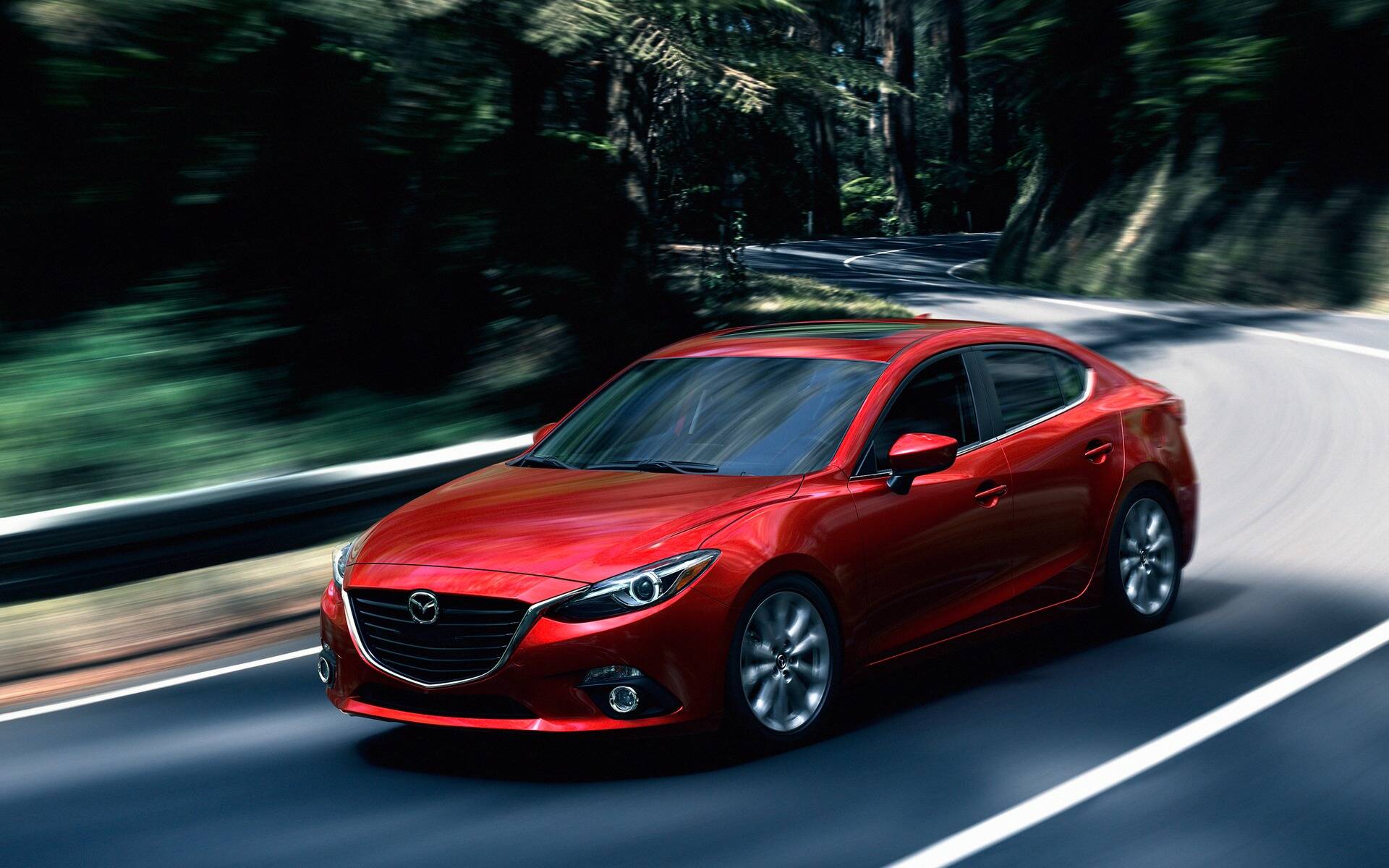
Under the hood, the 2014 Mazda 3 retains its familiar engine options, starting with the 2.0-liter four-cylinder engine that received updates a couple of years ago. For those seeking more power, there’s now an overhauled 2.5-liter four-cylinder engine available.
This larger engine sacrifices only a small amount of fuel efficiency compared to the 2.0-liter but rewards drivers with noticeably stronger performance, enhancing the overall driving experience.
Inside, the 2014 Mazda 3 sees major updates as well. While the car maintains its traditionally sporty interior feel, it now benefits from a sleeker, more contemporary design, better-quality materials, and a redesigned infotainment interface featuring a touchscreen.
Just as significant is the addition of an advanced suite of safety technologies, including blind-spot monitoring, rear cross-traffic alert, lane departure warning, and a low-speed collision mitigation system.
These enhancements give the new 3 a more sophisticated and mature feel than in previous generations. It’s no longer a vehicle built solely with 20-somethings in mind—it’s grown into something with broader appeal.
5. Subaru Outback (2010–2014, Non-Turbo)
While Subarus can be hit or miss, the naturally aspirated 2.5L Outback models from this era are surprisingly dependable especially once head gasket issues were resolved.
With proper maintenance, these wagons deliver strong performance without CEL issues for years.
Why it stays clean: Fewer forced induction components and improved sealing materials.
Even if the 2013 Subaru Outback never sets foot, or rather, tire, on the rugged Australian terrain that inspired its name, it’s still reassuring to know that challenging desert trails or uneven backroads won’t faze this crossover wagon in the slightest.
Thanks to its standard all-wheel drive and impressive 8.7 inches of ground clearance, the Outback remains a confidently capable adventure vehicle, able to handle dirt tracks and snow-covered streets with ease, even if serious off-roading lies outside its design scope.
New for 2013 is a more fuel-efficient four-cylinder “boxer” engine that allows the Outback to balance its outdoorsy personality with the practical demands of everyday commuting.
When mated to Subaru’s second-generation continuously variable transmission (CVT), this setup delivers 30 mpg on the highway—an admirable figure considering its off-pavement potential. At the same time, it maintains a smooth, composed ride and the readiness to venture off the beaten path whenever the mood strikes.
For those who crave more power or plan to make full use of the Outback’s 3,000-pound towing capacity, the available six-cylinder engine brings a noticeable performance bump.
The interior of the Outback is equally appealing, offering a well-designed, roomy cabin with generous headroom and legroom—even in the rear seats. The cargo area is also quite spacious, and it pairs beautifully with the versatile roof rack system that includes fold-out crossbars and a wide range of dealer-installed attachments.
All of this makes the Outback a smart and practical choice for anyone with an active lifestyle that involves toting around large outdoor gear without needing to step up to a bulkier SUV.
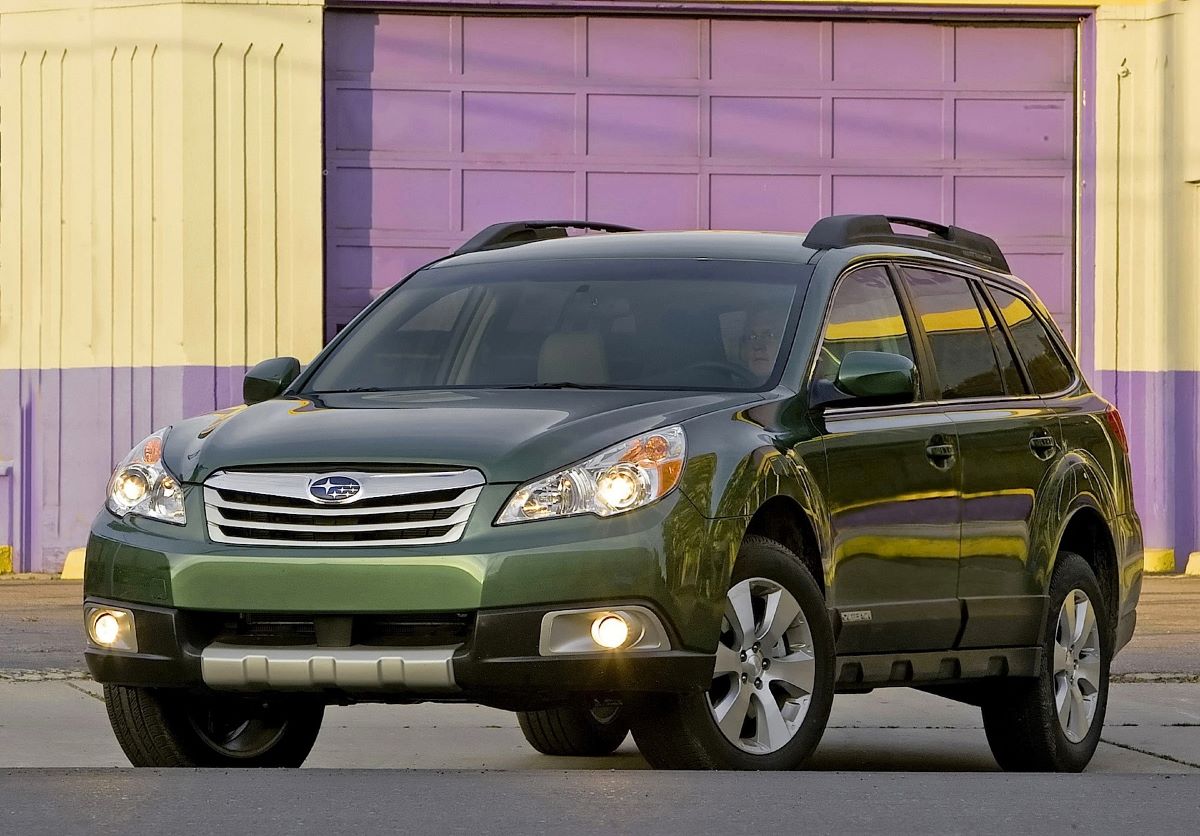
Another new offering for 2013 is Subaru’s EyeSight system—an advanced driver-assistance feature that uses a pair of cameras mounted on the windshield.
This system can manage adaptive cruise control, warn the driver when the vehicle drifts out of its lane, and even apply the brakes in an effort to avoid or mitigate a collision. “This is safety technology we’re accustomed to seeing from premium automakers, and its presence among more mainstream brands is encouraging.”
Just as the actual Australian Outback remains a remote and largely unpopulated stretch of wilderness, the market for midsize all-wheel-drive wagons with true off-road leanings is similarly sparse.
The 2013 Toyota Venza compares closely in terms of dimensions, utility, and engine options, but it lacks the same off-road ambitions. Alternatives like the 2013 Audi Allroad and 2013 Volvo XC70 are engineered for some trail capability, but they command a much higher price.
Beyond these, you’re mostly looking at taller crossovers such as the Chevrolet Equinox and Honda CR-V, which offer less capability when the pavement ends. In the end, the 2013 Subaru Outback essentially stands alone in its niche—and it earns a strong recommendation for it.
Also Read: 5 Trucks With the Best Factory Docking Stations and 5 Bare Consoles
Cars That Flash Constant Errors
Warning lights on your dashboard are supposed to help—not haunt—you. But some cars seem to treat the check engine light like it’s a feature, not a warning.
In this article, we spotlight vehicles that are notorious for flashing constant error messages, turning everyday driving into a guessing game of what’s going wrong this time. Whether it’s faulty sensors, overcomplicated electronics, or just poor reliability, these cars have earned a reputation for being more trouble than they’re worth.
1. BMW 3 Series (2006–2013, E90)
While these German sedans are a blast to drive, they’re notorious for electrical gremlins.
As the miles rack up, CEL codes pop up for everything from VANOS solenoids to failing oxygen sensors and thermostats. Even minor issues can lead to expensive diagnostics.
Common codes: P0301 (misfire), P0597 (thermostat heater control circuit), P0171 (lean condition).
After four solid years on the road, you’d think someone would have finally engineered an entry-level luxury car capable of standing toe-to-toe with the reigning BMW 3 Series.
Maybe by now a rival automaker would’ve slipped a BMW engineer a generous offer for the blueprints, or handed a 3 Series over to its own design team with the instruction, “Just replicate this.”
The truth is, the 3 Series is often imitated, but never quite duplicated. When it comes to pure driving excellence, the 2010 BMW 3 Series is still the gold standard.
As expected from BMW, the company has methodically enhanced this generation of the 3 Series since its 2006 debut. In 2007, the 335i arrived with its now-iconic twin-turbocharged inline-6 engine, which has received widespread acclaim.
That same year, BMW added a stylish coupe and a retractable-hardtop convertible to the lineup. For 2009, the brand addressed the polarizing taillight design on the sedan and wagon and introduced a turbocharged diesel inline-6 that brought both strong torque and impressive fuel efficiency.
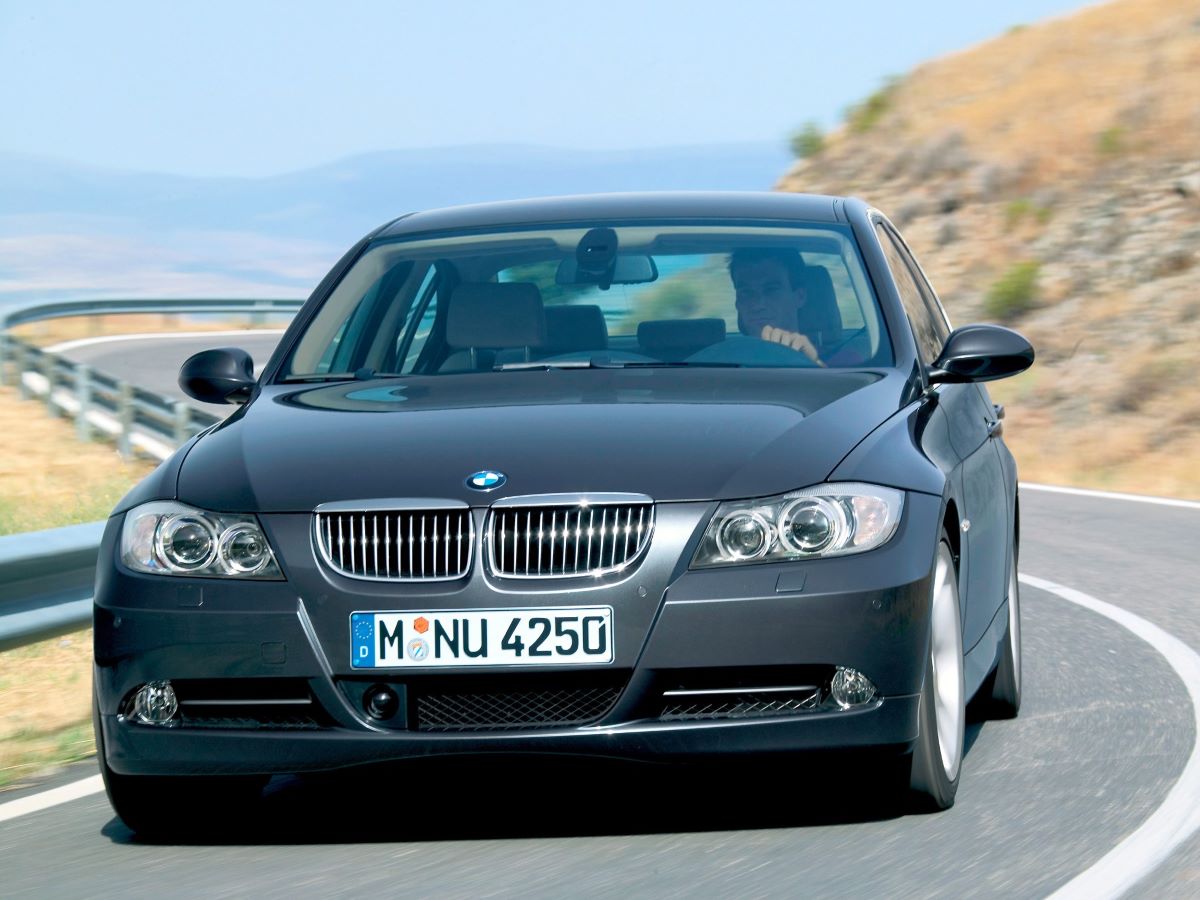
BMW even gave its once-maligned iDrive system a major overhaul, adding more physical buttons and a much better user interface. All of these refinements help explain why the 3 Series remains a standout in its segment, even five years into its lifecycle.
But beyond the updates lies the true essence of the 3 Series: its exceptional chassis. Simply put, no other vehicle in the entry-luxury segment strikes the same brilliant balance between sharp handling and a smooth, composed ride. Even with its standard suspension, the 3 Series outperforms many competitors.
Equip it with the Sport package, and the driving dynamics elevate to genuine sports car levels—without sacrificing comfort. While its performance figures are certainly impressive, the way the 3 Series feels on the road goes far beyond what numbers can convey.
The 2010 BMW 3 Series has held the title of America’s best-selling luxury vehicle for good reason, and there’s little doubt it will continue to lead the pack. Critics and consumers alike continue to recognize its benchmark status, celebrating its ability to please both spirited drivers and daily commuters.
Yes, there are other strong contenders—the potent Infiniti G37, the bold Cadillac CTS, and the refined Audi A4 come to mind—but even as this generation nears its final chapter, the 3 Series remains the undisputed king of the segment.
2. Chrysler 200 (2011–2015)
This mid-size sedan may look respectable on the outside, but under the hood it’s often chaos. From erratic throttle body performance to sensor failures and electrical bugs, the CEL on a high-mileage Chrysler 200 is practically a dashboard ornament.
Common codes: P2112 (throttle actuator), P0300 (random misfire), P0420 (catalyst efficiency).
Whether or not the 2013 Chrysler 200 earns our recommendation depends on which body style you choose: sedan or convertible. In the relatively small convertible segment, the 200 is a strong pick. However, the 200 sedan doesn’t fare nearly as well, falling behind a wealth of talented competition.
Both body styles share certain strengths. All Chrysler 200 models offer pleasant driving dynamics, a generous range of amenities and attractively designed cabins. And when you opt for the available V6 engine, the 200 boasts both crisp acceleration and respectable fuel economy.
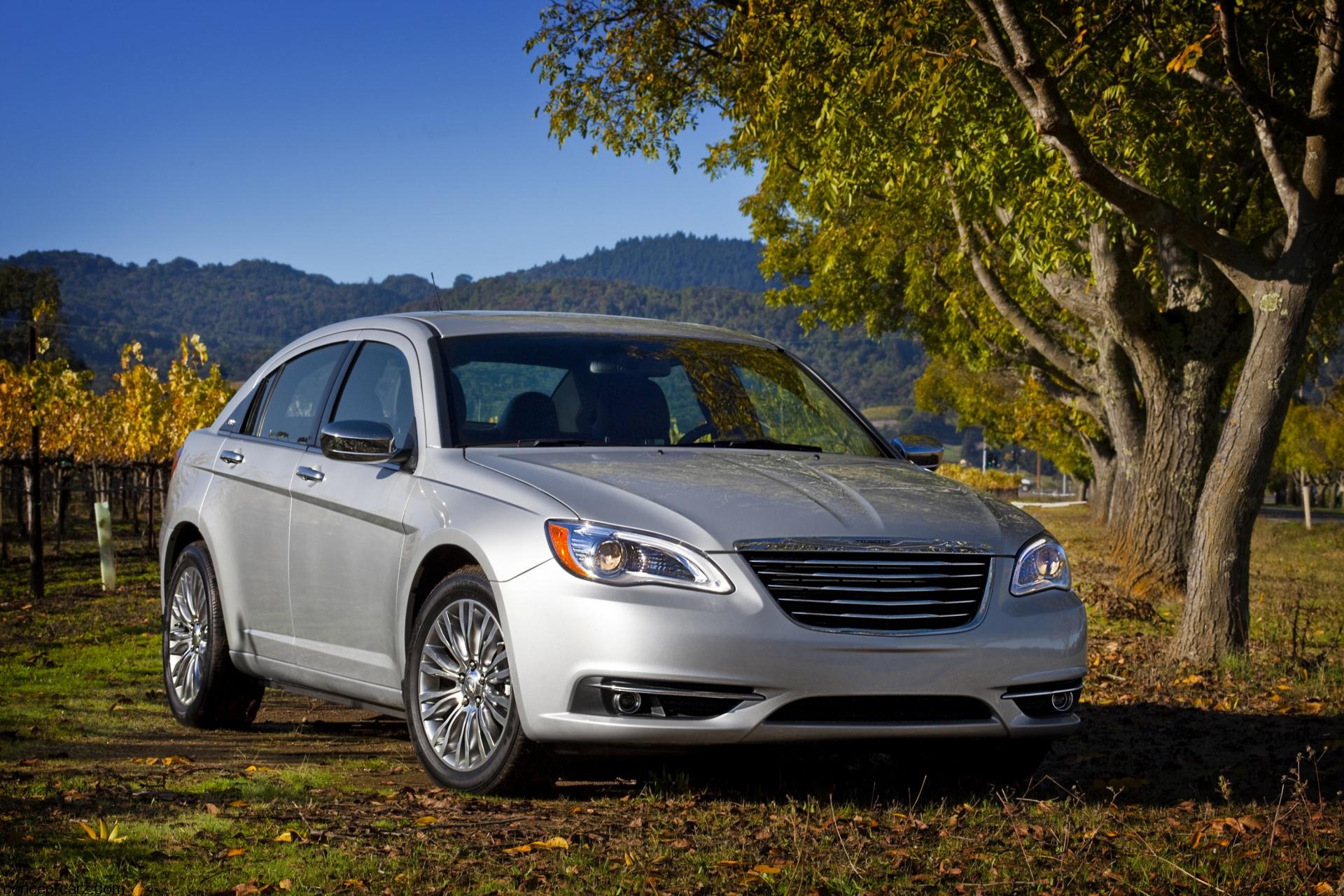
The Chrysler 200 convertible further distinguishes itself from the pack with its relatively generously sized trunk. There’s more room for cargo than you’ll find in competing models like the Ford Mustang and Volkswagen Eos.
The cabin is also pretty spacious, with enough rear legroom to accommodate backseat passengers in comfort, unusual for a drop top. For both these reasons, this Chrysler convertible stands as one of the most impressive picks in its segment.
It’s difficult to muster the same level of enthusiasm for the sedan, largely because the bar is so high in the midsize four-door category. The sedan offers less trunk and cabin space than competing models, and its available features and in-car electronics are a bit behind the curve.
While these shortcomings may seem relatively minor, they’re significant enough in this hard-fought category to place the Chrysler 200 sedan at a notable disadvantage. For this reason, we’d suggest that sedan buyers take a look at some of the 200’s more accomplished rivals.
3. Nissan Altima (2013–2018)
While early Altimas were bulletproof, newer ones with the CVT (continuously variable transmission) suffer from drivetrain inconsistencies and poor emissions control.
Transmission slip or failure often triggers CELs, and oxygen sensor and catalytic converter codes are common as mileage increases.
Common codes: P0840 (transmission fluid pressure), P0420 (catalyst below efficiency), P0101 (MAF sensor).
The 2016 Nissan Altima’s 2.5-liter four-cylinder engine delivers 182 horsepower and 180 pound-feet of torque. This power is directed to the front wheels via a continuously variable transmission (CVT) that incorporates simulated stepped gears to replicate the feel of a traditional automatic transmission.
According to the EPA, the estimated fuel economy stands at 31 mpg combined (27 mpg city/39 mpg highway). The sportier 2.5 SR trim sees a slight dip, coming in at 30 mpg combined (26 city/37 highway).
In performance testing conducted by Edmunds on a mechanically comparable 2013 Altima 2.5, the car reached 60 mph in 7.8 seconds—a time that places it above average for vehicles in its segment.
For drivers wanting more performance, the 3.5-liter V6 engine offers 270 hp and 251 lb-ft of torque. With this engine, the Altima can sprint from zero to 60 mph in just 6.2 seconds.
Fuel economy for the V6 is rated at 26 mpg combined (22 city/32 highway). These figures, along with those for the 2.5-liter engine, are considered excellent within the midsize sedan category.
All 2016 Nissan Altima models come equipped with standard safety features that include antilock brakes, stability and traction control, front-seat side airbags, and full-length side curtain airbags.
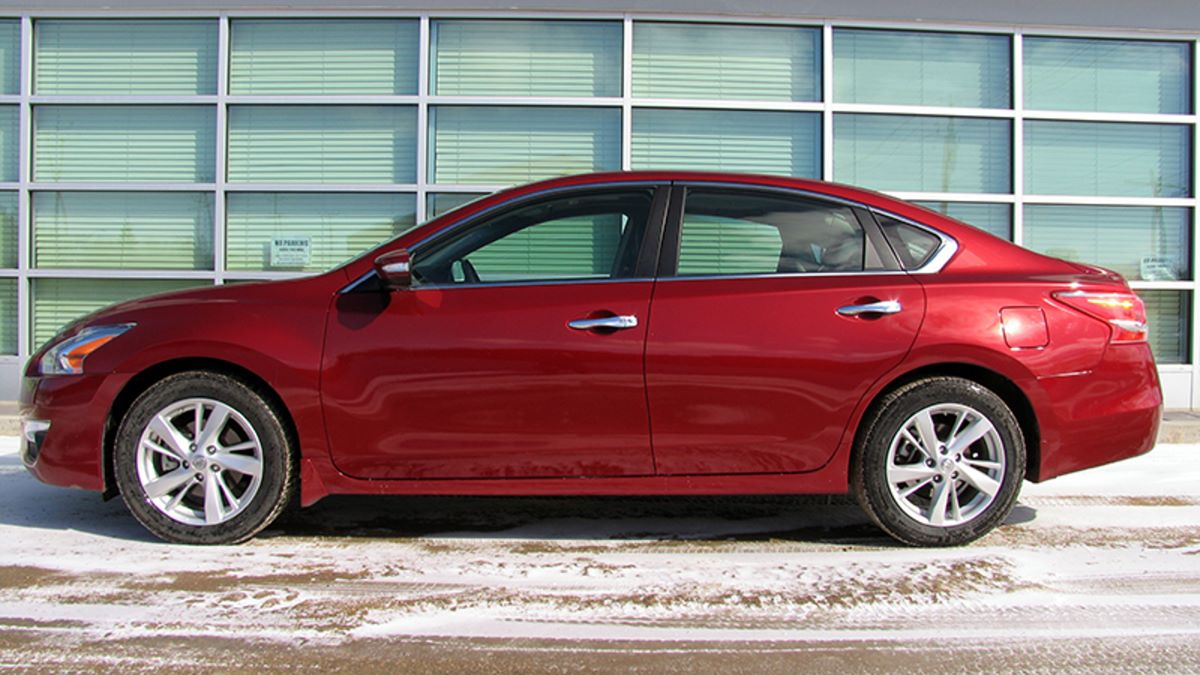
A rearview camera becomes standard starting with the 2.5 S trim and above. Additional features such as a blind-spot monitor and rear cross-traffic alert are included with the SV and SL trims.
Meanwhile, forward collision warning and mitigation systems—with automatic emergency braking—are exclusive to the SL trim level. The optional NissanConnect Services suite adds capabilities like automatic collision notification, emergency response, and stolen vehicle tracking.
As of this writing, the 2016 Altima had not yet undergone crash testing by the federal government. However, its mechanically identical predecessor, the 2015 Altima, earned a perfect five-star rating for overall crash protection—receiving five stars each in frontal-impact and total side-impact categories.
The Insurance Institute for Highway Safety gave the 2016 Altima its highest rating of “Good” in moderate-overlap frontal-offset, side-impact, roof-strength, and whiplash protection tests (the latter focusing on seatbelts and head restraints). Test results for the small-overlap front-impact category were not yet available at the time of publication.
4. Ford Escape (2009–2014, 4-Cylinder Models)
Many owners of high-mileage Ford Escapes complain about the CEL coming on due to emission control system faults. EVAP system leaks and EGR valve issues are prevalent, and once the codes begin, they often come in bunches.
Common codes: P0456 (EVAP system leak), P0401 (EGR flow insufficient), P0442 (small leak detected).
Even though its engines, steering system, design, and cabin have evolved significantly since the early 2000s, the 2010 Ford Escape still retains many characteristics of the original version that debuted during the final days of the Clinton administration. Unsurprisingly, this compact SUV is starting to show its age.
The most obvious signs are found in the interior, where the Escape falls short of some basic features now common in newer competitors. It lacks amenities like a telescoping steering wheel and a rear seat that both reclines and slides, making it less comfortable and less adaptable compared to more modern alternatives.
But perhaps even more concerning are its brakes—while the front discs are standard, the rear still uses outdated drum brakes, which simply don’t offer the stopping power of those found in rival small SUVs.
That said, the Escape does manage to stay relevant with a handful of advanced technology features packed into its aging frame. One standout is Ford’s Sync system, which smoothly connects your mobile phone and iPod/MP3 player to the vehicle’s interface.
When paired with the optional navigation system—shared across Ford’s vehicle lineup—the Escape can deliver real-time updates on traffic, weather conditions, sports scores, movie listings, and likely even your horoscope, if you ask politely.
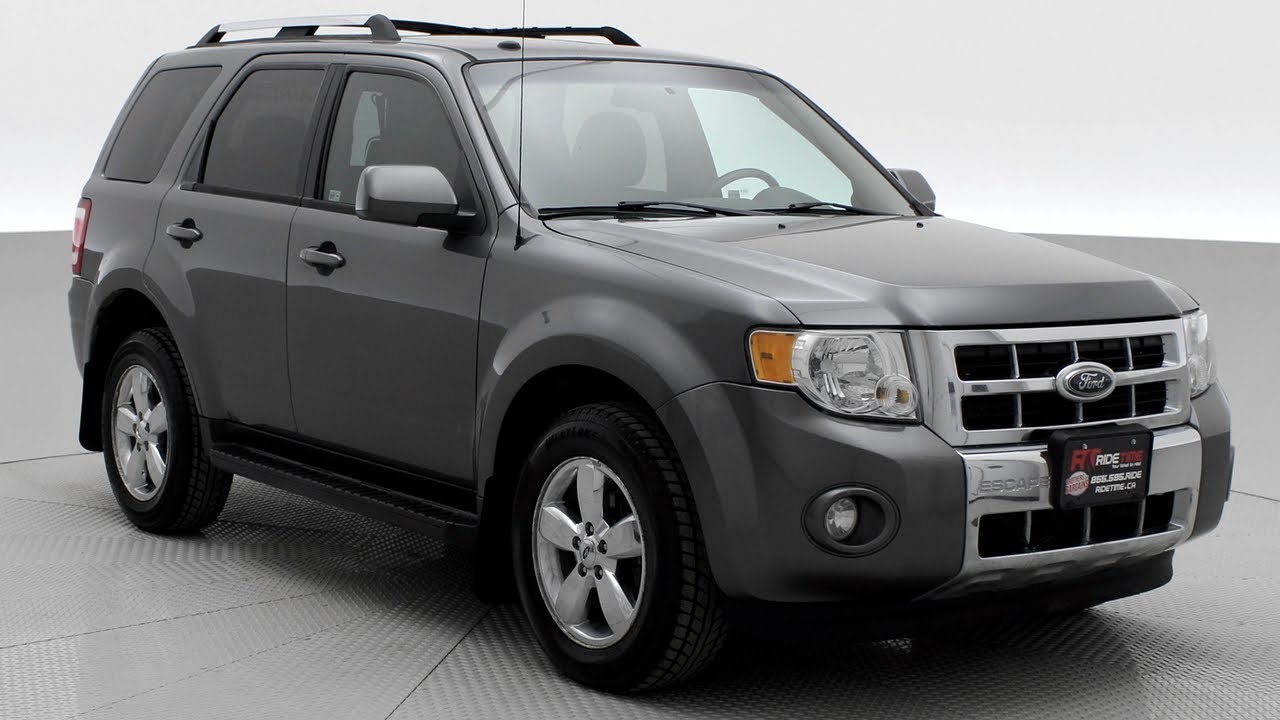
A new addition for 2010 is MyKey, a feature that lets parents program speed and audio volume restrictions for young drivers. It’s essentially a modern automotive twist on the old-school V-chip (a relic from the same era the Escape first launched).
Even more impressive is the Auto Park system, which borrows from Lexus and allows the vehicle to control its own steering during parallel parking. In our testing, the Escape’s version actually performed better than the much more expensive Lexus LS 460’s system.
Altogether, a fully equipped 2010 Ford Escape could still appeal to buyers who place a high value on cutting-edge tech. However, so can other leading compact SUVs, including the Chevrolet Equinox, Honda CR-V, Subaru Forester, and Toyota RAV4.
If you were to drive them all back-to-back, you might come away feeling that, despite its high-tech flourishes, the Escape feels just a bit too dated for today’s standards.
5. Chevrolet Equinox (2010–2017, 2.4L Engine)
The 2.4L Ecotec engine in these crossovers is infamous for timing chain issues, excessive oil consumption, and frequent CELs. Even after repairs, new issues often pop up related to variable valve timing and fuel trim errors.
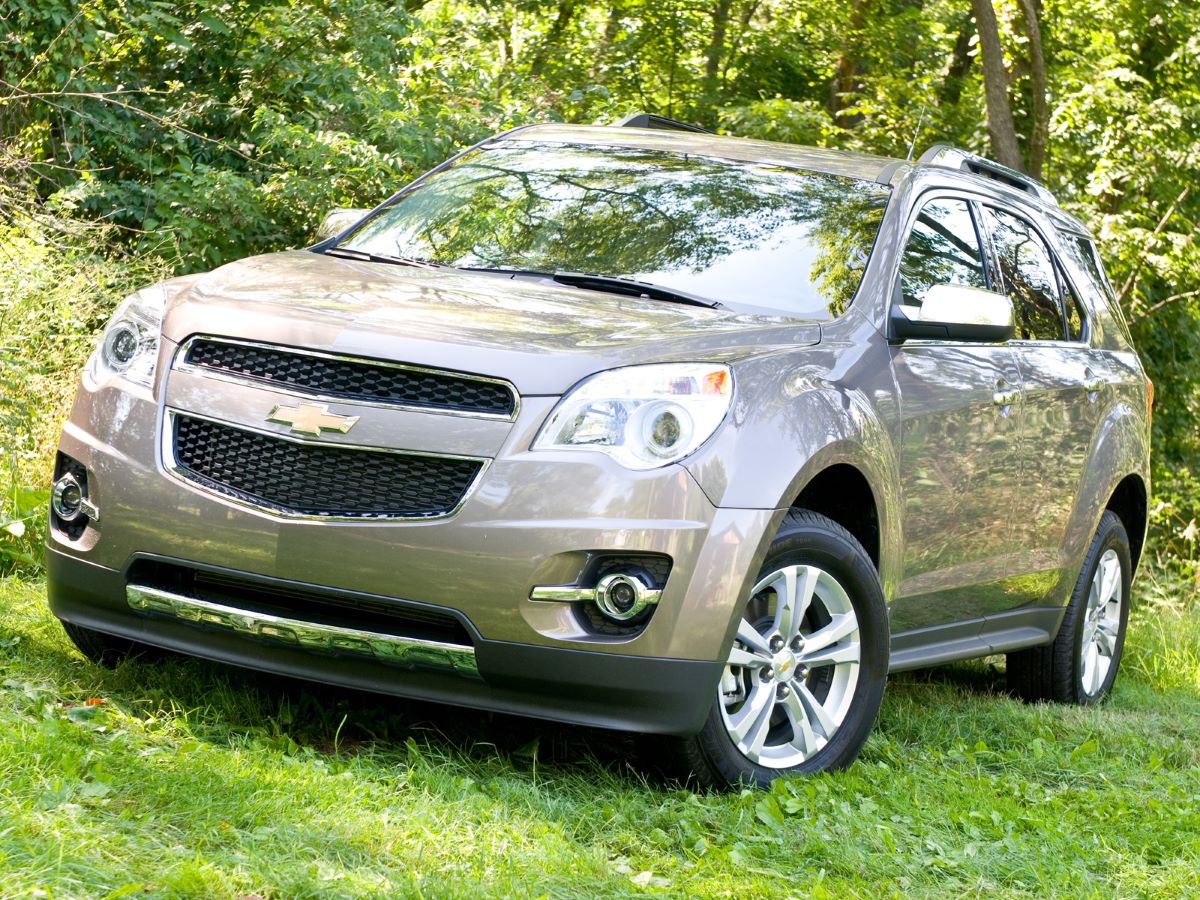
Common codes: P0011 (camshaft position timing), P0172 (rich fuel condition), P0300 (random/multiple misfire).
For high-mileage peace of mind, your best bet is to stick with Japanese sedans and crossovers known for tight engineering and low electronics failure rates.
The Chevrolet Equinox made its debut in 2004, and since that time, it has seen multiple redesigns and updates. The 2017 model belongs to the second generation, which was introduced in 2010. Equipped with a 2.4-liter four-cylinder engine, this version aimed to deliver solid performance while maintaining competitive fuel economy.
The engine is rated at approximately 182 horsepower and comes mated to a six-speed automatic transmission. On paper, these figures might appear attractive, but the actual ownership experience tells a more complicated story.
As the automotive market has progressed, so have the expectations of consumers. Buyers today look for more than just power and comfort—they expect reliability and safety to be part of the package.
Unfortunately, the 2.4L engine in the 2017 Chevy Equinox has become associated with a range of problems that can undercut those expectations. Common issues like high oil consumption and even potential engine failure have frustrated many owners and cast doubt on the vehicle’s long-term dependability.
For both current drivers and potential buyers, understanding these engine concerns is essential, as they can have a serious effect on daily use and long-term maintenance costs.
If you’re shopping used, always bring an OBD-II scanner or at least ask for a scan report.
A clean dashboard is nice, but a silent CEL (turned off before a sale) can cost you thousands later. Reliability isn’t just about the engine it’s about the electronics that control it.

